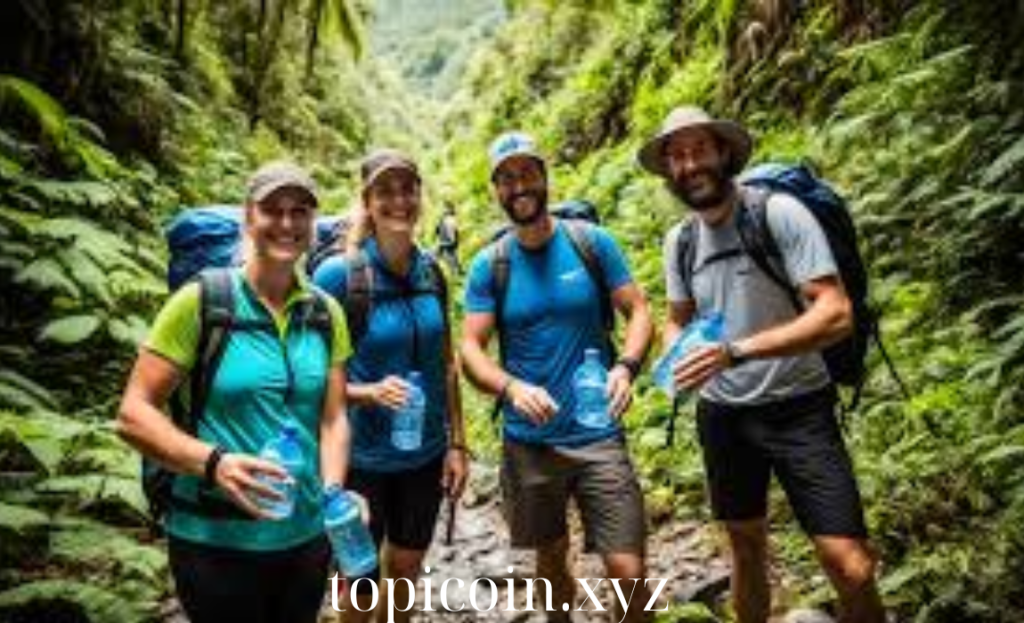Language and Communication
Travel Language Guides: Your Essential Companion for Global Adventures
Traveling to new countries is an exciting way to experience diverse cultures, cuisine, and landscapes, but language barriers can sometimes make navigating these adventures challenging. A well-crafted travel language guide can be an essential companion, offering helpful phrases, cultural insights, and communication tips that make your trip smoother and more immersive. Here’s how travel language guides can enhance your global adventures and provide practical tools for communication.
1. Essential Phrases for Everyday Communication
Whether you’re ordering food, asking for directions, or checking into a hotel, having basic phrases at your disposal is key to navigating new destinations. A good travel language guide focuses on the most commonly used phrases in everyday situations, giving you the ability to handle common interactions with ease.
- Greetings and Introductions: Learn how to say “hello,” “goodbye,” “please,” and “thank you” to make a positive first impression.
- Asking for Directions: Phrases like “Where is…?” or “How do I get to…?” will help you navigate unfamiliar cities and towns.
- Ordering Food: Learn how to read menus, ask for recommendations, and communicate dietary restrictions.
- Checking into Accommodations: Phrases like “I have a reservation” or “What time is checkout?” will simplify your interactions at hotels, hostels, or guesthouses.
Example: When visiting France, a simple phrase like “Excusez-moi, où est la gare ?” (Excuse me, where is the train station?) can be incredibly helpful when navigating public transportation in cities like Paris.
2. Cultural Insights and Etiquette
Language guides often include helpful cultural tips that go beyond mere translation. Understanding local customs, social norms, and etiquette can make a significant difference in how you’re perceived and how comfortable you feel interacting with locals.
- Local Etiquette: Knowing how to greet someone appropriately, whether with a handshake, bow, or kiss on the cheek, shows respect for local customs.
- Tipping Practices: Learn whether tipping is customary, expected, or seen as inappropriate in restaurants, taxis, and hotels.
- Body Language and Gestures: Some gestures can have different meanings in different cultures. A travel language guide helps you avoid misunderstandings by explaining culturally specific non-verbal cues.
Example: In Japan, bowing is a common way of greeting. A travel language guide would explain how deep and long to bow depending on the formality of the situation, helping you fit in seamlessly with local customs.
3. Emergency and Medical Phrases
While no one wants to think about emergencies while traveling, being prepared with key medical and emergency phrases is essential. Travel language guides often include a section dedicated to emergency communication, which can be vital in urgent situations.
- Emergency Assistance: Learn how to ask for help, call the police, or communicate with medical professionals in case of an emergency.
- Medical Needs: Being able to describe symptoms or ask for medication is crucial if you’re feeling unwell in a foreign country.
- Contacting Embassies: Guides often include information on how to contact your country’s embassy or consulate in case of lost passports or other travel issues.
Example: In Italy, knowing how to say “Ho bisogno di un dottore” (I need a doctor) or “C’è una farmacia qui vicino?” (Is there a pharmacy nearby?) could prove invaluable if you experience a health issue while traveling.
4. Transportation and Accommodation Vocabulary
Navigating foreign transportation systems and understanding accommodation terms are common challenges for travelers. Travel language guides cover essential transportation and lodging phrases to help you find your way and make your stay more comfortable.
- Transportation Terms: Phrases related to booking tickets, boarding trains or buses, and using public transportation are often included.
- Accommodation Terminology: Learn how to ask about room types, amenities, or additional services at hotels, guesthouses, or vacation rentals.
Example: In Spain, a travel language guide will help you book transportation by teaching you phrases like “¿A qué hora sale el autobús?” (What time does the bus leave?) or “¿Cuánto cuesta un billete de tren?” (How much is a train ticket?).
5. Shopping and Bargaining Phrases
Shopping in local markets is often one of the highlights of international travel, and knowing the right phrases can make the experience even more enjoyable. A travel language guide helps you engage in bargaining, ask about prices, and understand product descriptions.
- Asking About Prices: Simple phrases like “How much is this?” or “Can I pay by card?” are essential when shopping abroad.
- Bargaining: In some countries, bargaining is part of the shopping culture. Learn phrases that allow you to politely negotiate prices.
- Local Currencies: Travel guides often explain how to talk about money, helping you with currency exchanges and handling payments.
Example: In Morocco’s bustling souks, you might use the phrase “Bikem hadha?” (How much is this?) to ask for prices, followed by “Can nighfi shwia?” (Can you reduce the price?) when bargaining for a better deal.
6. Pronunciation Guides and Phonetics
One of the biggest challenges when learning a new language is pronunciation. Travel language guides typically provide easy-to-understand phonetic breakdowns, helping you pronounce words and phrases accurately.
- Phonetic Spellings: Words are often spelled out phonetically, allowing travelers to approximate the correct pronunciation even if they are unfamiliar with the language.
- Audio Guides: Some travel language guides, particularly digital ones, include audio components so you can hear how native speakers pronounce common phrases.
Example: In Thailand, the phonetic spelling “Sawadee-kah” (hello for women) or “Sawadee-krap” (hello for men) helps travelers greet locals with the proper pronunciation, even if they’re new to the language.
7. Digital Language Guides and Apps
In today’s digital age, many travelers prefer the convenience of mobile apps or downloadable language guides that can be accessed offline. These tools offer interactive features that make learning and using a new language easier.
- Translation Apps: Apps like Google Translate or Duolingo allow you to translate phrases instantly or practice the language before your trip.
- Offline Access: Many apps and digital guides work offline, ensuring that you have access to essential phrases even without an internet connection.
- Interactive Learning: Some apps include quizzes, flashcards, and exercises to help reinforce your language skills.
Example: Using an app like Google Translate, you can quickly translate “Where is the nearest ATM?” into multiple languages, even without an internet connection, making it easier to manage everyday tasks during your travels.
8. Learning the Local Language for Deeper Cultural Immersion
Travel language guides do more than just help you get by—they open the door to deeper cultural experiences. Learning even a few key phrases in the local language shows respect for the country you’re visiting and often leads to more meaningful interactions with locals.
- Breaking the Ice: Speaking the local language, even if it’s just basic phrases, often encourages locals to engage with you more openly.
- Gaining Access to Local Culture: When you can communicate in the local language, you’re more likely to be invited to cultural experiences or given insider tips that enhance your travel experience.
- Understanding Context: Language guides can help you understand cultural nuances, local humor, and regional dialects, offering a richer understanding of the place you’re visiting.
Example: In Japan, learning to say “Itadakimasu” (I humbly receive) before a meal and “Gochisousama deshita” (Thank you for the meal) afterward reflects respect for Japanese dining etiquette and deepens your cultural immersion.
Conclusion: Your Essential Travel Companion
Travel language guides are indispensable tools for global travelers, helping bridge the communication gap and enhancing the travel experience by making it easier to navigate new environments, interact with locals, and understand cultural nuances. Whether you prefer a traditional phrasebook or a digital app, having a guide that covers essential phrases, etiquette, and travel-specific vocabulary ensures you’re prepared for any situation, helping you fully enjoy your global adventures.

